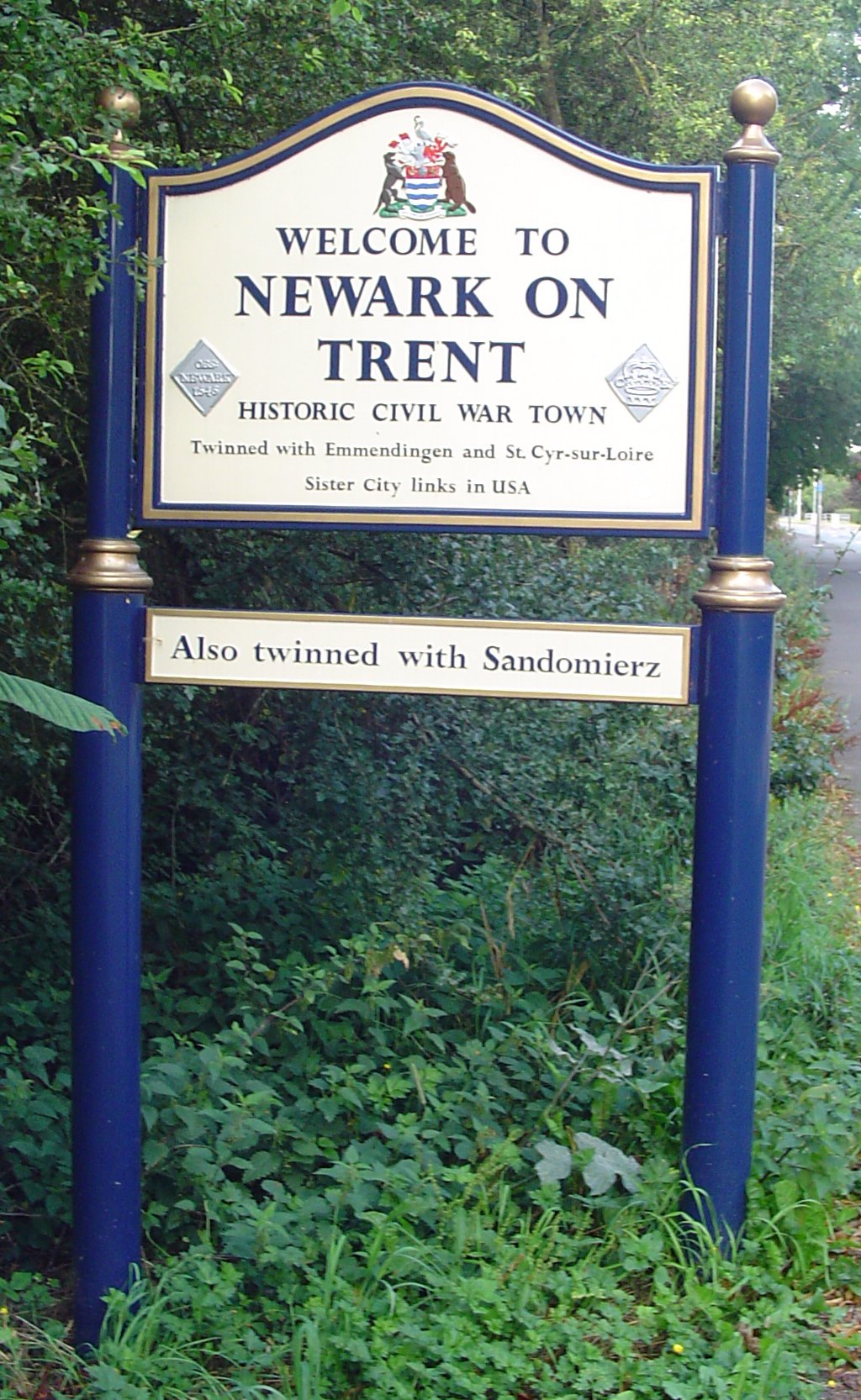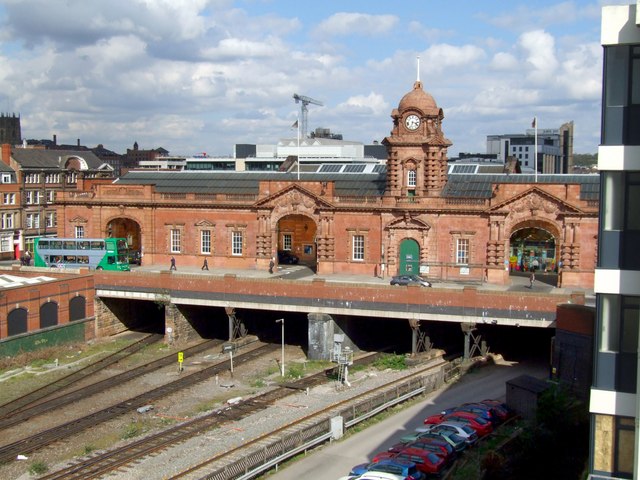|
Barkestone-le-Vale
Barkestone-le-Vale is a village and (as just "Barkestone") a former civil parish, now in the parish of Redmile, in the Melton district, in the north east of Leicestershire, England. In 1931 the parish had a population of 238. History The name Barkestone means "farm/settlement of Bark". The village originated as a settlement in the 7th century. It features as a parish in the 1086 Domesday Book.http://www.barkestonelevale.com/main.htm , accessed 4 November 2007. On 1 April 1936 the parish was abolished and merged with Redmile. Heritage There are 120 dwellings in Barkestone-le-Vale. The village had a primary school, which was closed in the late 1980s, by which time it had only 11 pupils. The school building was converted for residential use, as was the former mill house and a large derelict farmhouse. The Church of St Peter and St Paul is a listed building Grade II* dating mainly from the 14th century with 15th-century additions. Most of the windows are in the Perpendicular st ... [...More Info...] [...Related Items...] OR: [Wikipedia] [Google] [Baidu] |
Church Of St Peter And St Paul, Barkestone-le-Vale
The Church of St Peter and St Paul is a church in Barkestone-le-Vale, Leicestershire, England. It is a Grade II* listed building. History The church is mostly 14th century but with some 15th century additions. Several of the windows are built in the Gothic style. In 1840, the nave, north aisle, clerestory, tower and chancel were rebuilt, and the south aisle built. The whole church was then restored 17 years later. The congregation belongs to the Vale of Belvoir group.A Church Near YoRetrieved 28 August 2021. References Barkestone-le-Vale Barkestone-le-Vale Barkestone-le-Vale is a village and (as just "Barkestone") a former civil parish, now in the parish of Redmile, in the Melton district, in the north east of Leicestershire, England. In 1931 the parish had a population of 238. History The name ... Redmile {{Leicestershire-struct-stub ... [...More Info...] [...Related Items...] OR: [Wikipedia] [Google] [Baidu] |
Borough Of Melton
Melton is a Non-metropolitan district, local government district with borough status in north-eastern Leicestershire, England. It is named after its main town, Melton Mowbray. Other settlements include Asfordby and Bottesford, Leicestershire, Bottesford. At the 2011 census, it had a population of 50,376. Melton is a rural area in the north-east part of Leicestershire and at the heart of the East Midlands. It is the 10th smallest district in England by population. The main activities of the district are centred on the single market town of Melton Mowbray which had a population of 27,158 at the 2011 census. There are some 70 small villages within the surrounding rural area and the area of the district is 481.38 km2. History It was formed in 1974, from the Melton Mowbray Urban District and the Melton and Belvoir Rural District. The council offices on ''Nottingham Road'' burnt down on 30 May 2008. Across the road were situated the main offices of the East Midlands Regional Ass ... [...More Info...] [...Related Items...] OR: [Wikipedia] [Google] [Baidu] |
Redmile
Redmile is an English village and civil parish in the Melton district of Leicestershire, about north of Melton Mowbray and west of Grantham. The population of the civil parish, which includes Barkestone-le-Vale and Plungar, was 921 at the 2011 census, up from 829 in 2001."Census 2001 Parish profile" Leicestershire County Council. Retrieved 2 December 2014 Joint parish The parish lies in theVale of Belvoir
The Vale of Belvoir ( ) covers adjacent areas of Leicestershire, Nottinghamshire and Lincolnshire, England. The name derives from the Norman-French for "beautiful view" and dates back to Norman times.
Extent and geology
The vale is a tract ...
... [...More Info...] [...Related Items...] OR: [Wikipedia] [Google] [Baidu] |
Redmile Railway Station
Redmile railway station served the villages of Redmile and Barkestone-le-Vale, Nottinghamshire and also Belvoir Castle. It was on the Great Northern and London and North Western Joint Railway. It opened in 1879 and closed to passengers in 1951. Fuel deliveries The station remained in use for oil deliveries into the 1980s. These were for Redmile Petroleum Storage Depot, constructed in the late 1930s and later expanded. A pumping station was added in 1943 as part of the pipeline network. The two tank farm sites were operated by Texaco until they were emptied in the early 1990s, after the end of the Cold War. There were four 500-ton and four 800-ton tanks originally equipped with both rail and road loading facilities. The rail facilities were removed in the 1980s, but the road loading gantry continued to operate until the tank farms were closed.Tim Whittle: Fuelling the Wars – PLUTO and the Secret Pipeline Network 1936 to 2015 (2017), p. 219. References {{Closed stations ... [...More Info...] [...Related Items...] OR: [Wikipedia] [Google] [Baidu] |
Acrocephalus (bird)
The ''Acrocephalus'' warblers are small, insectivorous passerine birds belonging to the genus ''Acrocephalus''. Formerly in the paraphyletic Old World warbler assemblage, they are now separated as the namesake of the marsh and tree warbler family Acrocephalidae. They are sometimes called marsh warblers or reed warblers, but this invites confusion with marsh warbler and reed warbler proper, especially in North America, where it is common to use lower case for bird species. These are rather drab brownish warblers usually associated with marshes or other wetlands. Some are streaked, others plain. Many species breeding in temperate regions are migratory. This genus has heavily diversified into many species throughout islands across the tropical Pacific. This in turn has led to many of the resulting insular endemic species to become endangered. Several of these species (including all but one of the species endemic to the Marianas and two endemic to French Polynesia) have already go ... [...More Info...] [...Related Items...] OR: [Wikipedia] [Google] [Baidu] |
Villages In Leicestershire
A village is a clustered human settlement or community, larger than a hamlet but smaller than a town (although the word is often used to describe both hamlets and smaller towns), with a population typically ranging from a few hundred to a few thousand. Though villages are often located in rural areas, the term urban village is also applied to certain urban neighborhoods. Villages are normally permanent, with fixed dwellings; however, transient villages can occur. Further, the dwellings of a village are fairly close to one another, not scattered broadly over the landscape, as a dispersed settlement. In the past, villages were a usual form of community for societies that practice subsistence agriculture, and also for some non-agricultural societies. In Great Britain, a hamlet earned the right to be called a village when it built a church. [...More Info...] [...Related Items...] OR: [Wikipedia] [Google] [Baidu] |
Bottesford, Leicestershire
Bottesford is a village and civil parish in Leicestershire, England. It lies in the Vale of Belvoir and forms part of the Borough of Melton, as its largest village, on the borders of Leicestershire with Nottinghamshire and Lincolnshire. Location Bottesford is about east of Nottingham and north of Melton Mowbray. The village is the largest in the Vale of Belvoir and near to Belvoir Castle, home to the Duke and Duchess of Rutland. It had a population of 3,587 at the 2011 census, estimated in 2018 at 3,382. It borders smaller parishes in Leicestershire, Lincolnshire and Nottinghamshire, such as Redmile, Sedgebrook, Orston and Elton on the Hill. The local amenities include a post office, a railway station, a library, a church, a convenience store, three restaurants and three pubs: ''The Bull Inn'', ''The Rutland Arms'', and ''The Thatch''. Name Bottesford derives its name from the Anglo-Saxon "Ford belonging to the botl" (house). The ford was over the River Devon. Bottesford is ... [...More Info...] [...Related Items...] OR: [Wikipedia] [Google] [Baidu] |
Newark-on-Trent
Newark-on-Trent or Newark () is a market town and civil parish in the Newark and Sherwood district in Nottinghamshire, England. It is on the River Trent, and was historically a major inland port. The A1 road (Great Britain), A1 road bypasses the town on the line of the ancient Great North Road (Great Britain), Great North Road. The town's origins are likely to be Roman Britain, Roman, as it lies on a major Roman road, the Fosse Way. It grew up round Newark Castle, Nottinghamshire, Newark Castle and as a centre for the wool and cloth trades. In the English Civil War, it was besieged by Roundheads, Parliamentary forces and Relief of Newark, relieved by Cavaliers, Royalist forces under Prince Rupert. Newark has a market place lined with many historical buildings and one of its most notable landmark is Church of St Mary Magdalene, Newark-on-Trent, St Mary Magdalene church with its towering spire at high and the highest structure in the town. The church is the tallest church in Nott ... [...More Info...] [...Related Items...] OR: [Wikipedia] [Google] [Baidu] |
Melton Mowbray
Melton Mowbray () is a town in Leicestershire, England, north-east of Leicester, and south-east of Nottingham. It lies on the River Eye, known below Melton as the Wreake. The town had a population 27,670 in 2019. The town is sometimes promoted as Britain's "Rural Capital of Food", it is the home of the Melton Mowbray pork pie and is the location of one of six licensed makers of Stilton cheese. History Toponymy The name comes from the early English word Medeltone – meaning "Middletown surrounded by small hamlets" (as do Milton and Middleton). Mowbray is the Norman family name of early Lords of the Manor – namely Robert de Mowbray. Early history In and around Melton, there are 28 scheduled ancient monuments, some 705 buildings of special architectural or historical interest, 16 sites of special scientific interest, and several deserted village sites. Its industrial archaeology includes the Grantham Canal and remains of the Melton Mowbray Navigation. Windmill sites and ... [...More Info...] [...Related Items...] OR: [Wikipedia] [Google] [Baidu] |
Skegness Railway Station
Skegness railway station serves the seaside resort of Skegness in Lincolnshire, England at the terminus of the ''Poacher Line''. The station is now owned by Network Rail and managed by East Midlands Railway, who provide all rail services that run to and from Nottingham. History The line to Wainfleet was opened in August 1871 by the Wainfleet and Firsby Railway. This line was then extended to Skegness; the station opened on 28 July 1873. Skegness was dubbed "the Blackpool of the East Coast" or "Nottingham by the Sea" and has a mascot, the Jolly Fisherman (designed by John Hassall in 1908 for the Great Northern Railway) and a slogan - "Skegness is so bracing" - a reference to the chilly prevailing north-easterly winds that can and frequently do blow off the North Sea. A statue of The Jolly Fisherman now greets passengers as they arrive at the station when entering through the main entrance. Up until 1966, the railway station had a goods yard with sheds; however, this area ... [...More Info...] [...Related Items...] OR: [Wikipedia] [Google] [Baidu] |
Grantham Railway Station
Grantham railway station is on the East Coast Main Line in the United Kingdom, serving the town of Grantham, Lincolnshire. It is down the line from and is situated on the main line between to the south and to the north. Two secondary lines diverge from the main line north of Grantham: the "Poacher Line" to and a branch line to . Its three-letter station code is GRA. History The original station at Grantham ( Old Wharf) was opened when the Ambergate, Nottingham, Boston & Eastern Junction Railway opened its line from Nottingham on 15 July 1850. This line was taken over by the Great Northern Railway in 1854. This was replaced by the present station which opened on 1 August 1852; the Old Wharf station closed the following day. The new station was on the GNR's direct line between Peterborough and Retford (the Towns Line), which was completed in 1852. The alternative route via Boston and Lincoln (the Fens Loop Line) had already opened in 1850. The Boston, Sleaford and Mid ... [...More Info...] [...Related Items...] OR: [Wikipedia] [Google] [Baidu] |
Nottingham Railway Station
Nottingham station, briefly known as Nottingham City and for rather longer as Nottingham Midland, is a railway station and tram stop in the city of Nottingham. It is the principal railway station of Nottingham. It is also a nodal point on the city's tram system, with a tram stop that was originally called Station Street but is now known as Nottingham Station. The station was first built by the Midland Railway (MR) in 1848 and rebuilt by the same company in 1904, with much of the current building dating from the later date. It is now owned by Network Rail and managed by East Midlands Railway (EMR). Besides EMR trains, it is also served by CrossCountry and Northern trains and by Nottingham Express Transit (NET) trams. The station was one of several that once served the city of Nottingham. Amongst these were the city centre stations of on the Great Central Railway, and on the Great Northern Railway; both of these stations are now closed. A number of minor stations served l ... [...More Info...] [...Related Items...] OR: [Wikipedia] [Google] [Baidu] |







